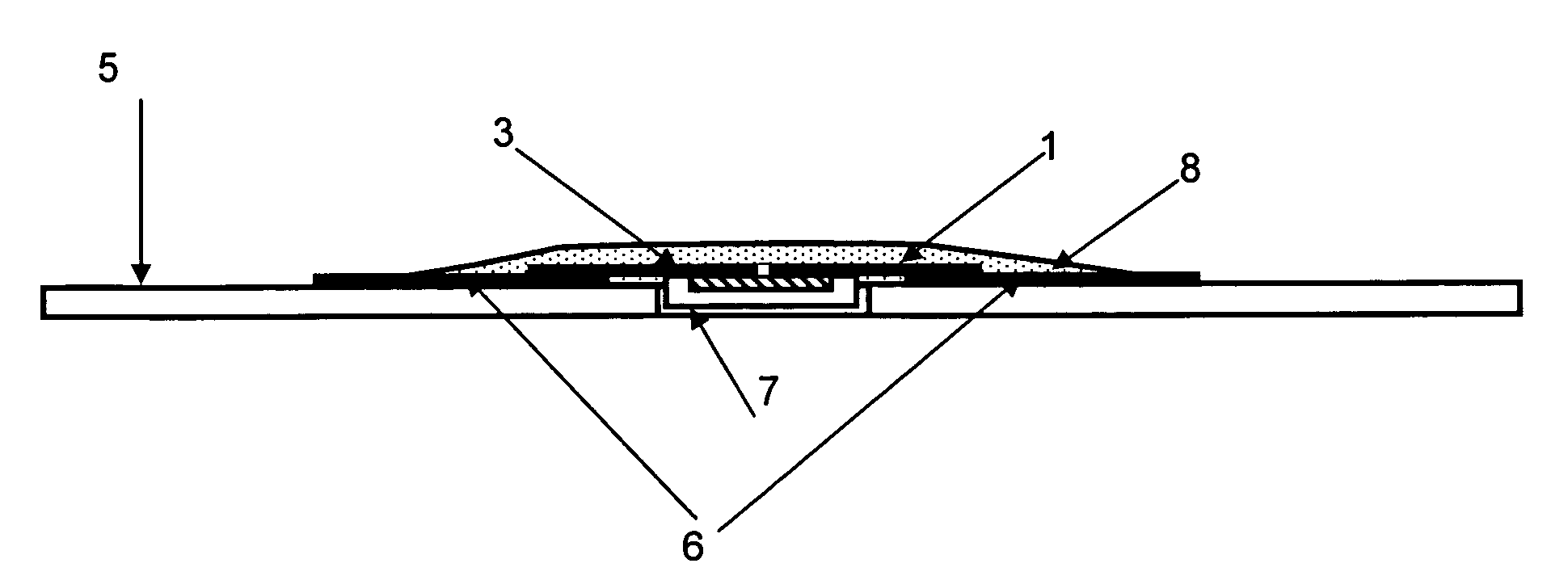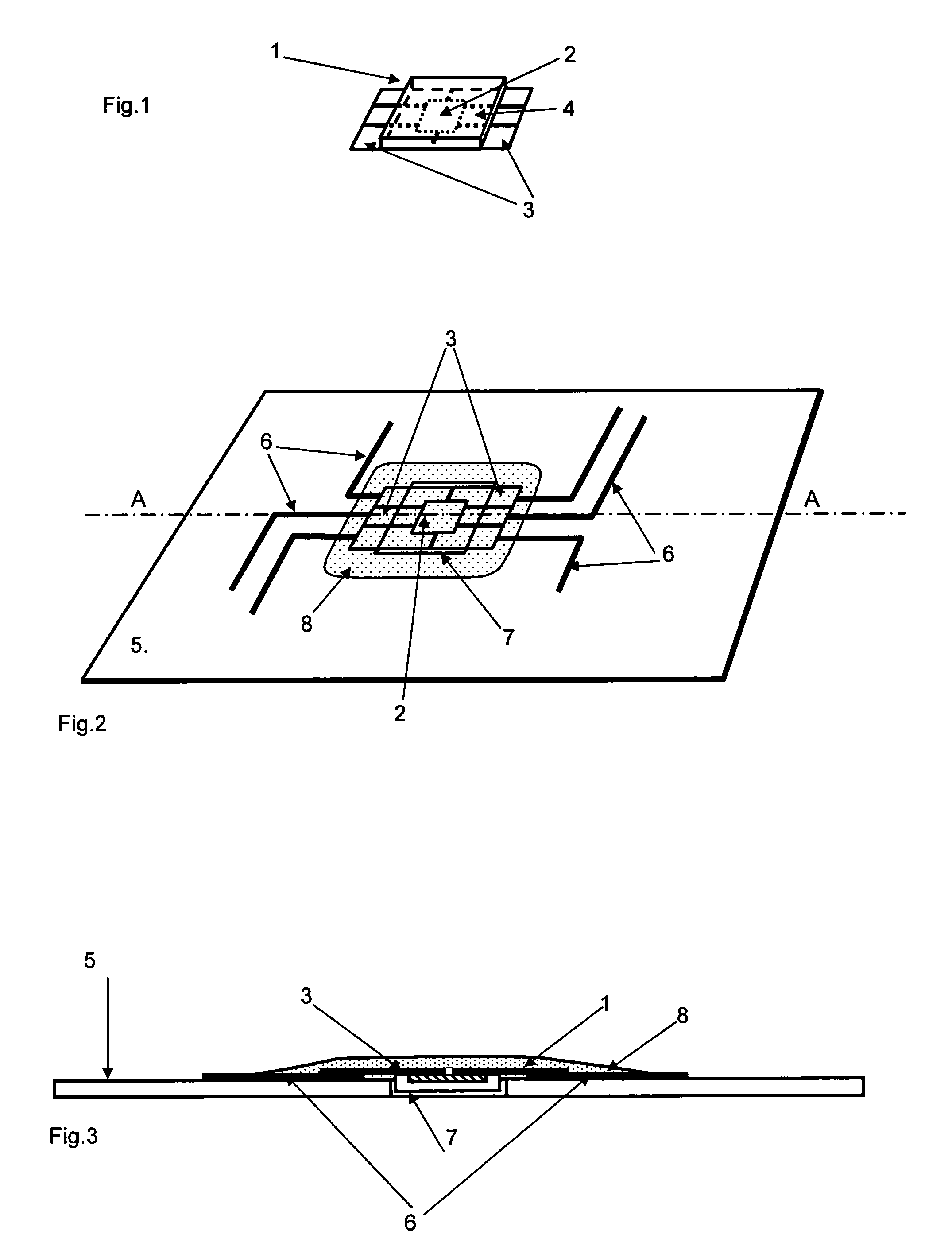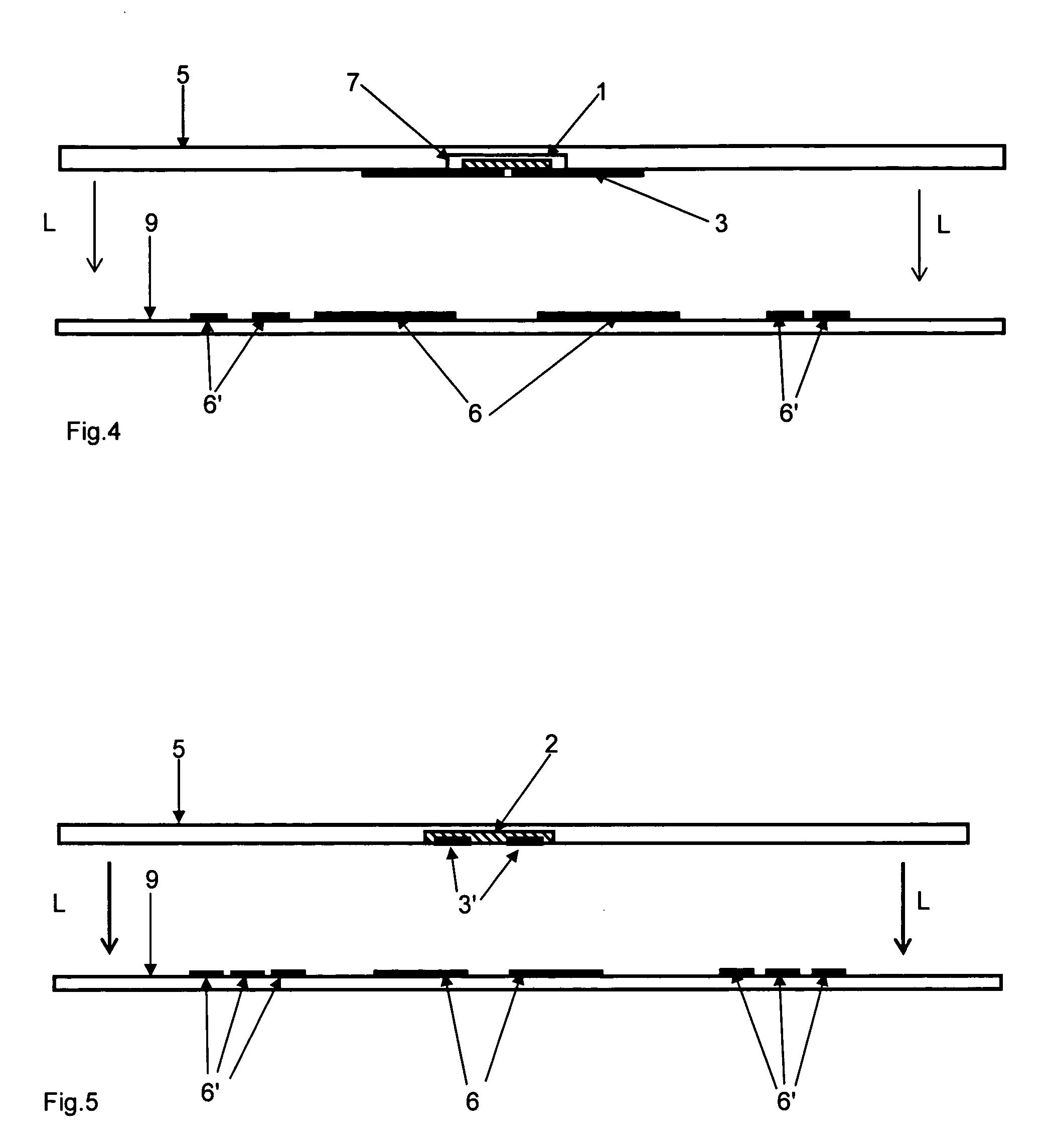Method for mounting an electronic component on a substrate
- Summary
- Abstract
- Description
- Claims
- Application Information
AI Technical Summary
Benefits of technology
Problems solved by technology
Method used
Image
Examples
Embodiment Construction
[0030]The component (1) in FIG. 1 forming an electronic module includes a chip (2) protected by coating (4) in insulating material such as an epoxy resin. The chip contacts are connected to contact areas (3) formed inside a tinned copper conductive sheet, for example, forming the “lead frame”.
[0031]FIG. 2 and the section according to the illustrated axis A-A in FIG. 3 show an example of a transponder that includes a thin substrate (5) that can be deformed on which the component (1) in FIG. 1 is placed. The upper surface of said substrate includes tracks or conductive areas (6) engraved, glued or printed by silk-screening, for example. The coated part (4) of the component (1) is inserted into a cavity (7) made up of milling or a window cut into the substrate in order to minimize the final thickness of the transponder. The conductive tracks (6) of the substrate are in contact with the component conductive areas (3) only by means of pressure without using welding or conductive glue. Th...
PUM
| Property | Measurement | Unit |
|---|---|---|
| Pressure | aaaaa | aaaaa |
| Electrical conductor | aaaaa | aaaaa |
| aaaaa | aaaaa |
Abstract
Description
Claims
Application Information
 Login to View More
Login to View More - R&D
- Intellectual Property
- Life Sciences
- Materials
- Tech Scout
- Unparalleled Data Quality
- Higher Quality Content
- 60% Fewer Hallucinations
Browse by: Latest US Patents, China's latest patents, Technical Efficacy Thesaurus, Application Domain, Technology Topic, Popular Technical Reports.
© 2025 PatSnap. All rights reserved.Legal|Privacy policy|Modern Slavery Act Transparency Statement|Sitemap|About US| Contact US: help@patsnap.com



